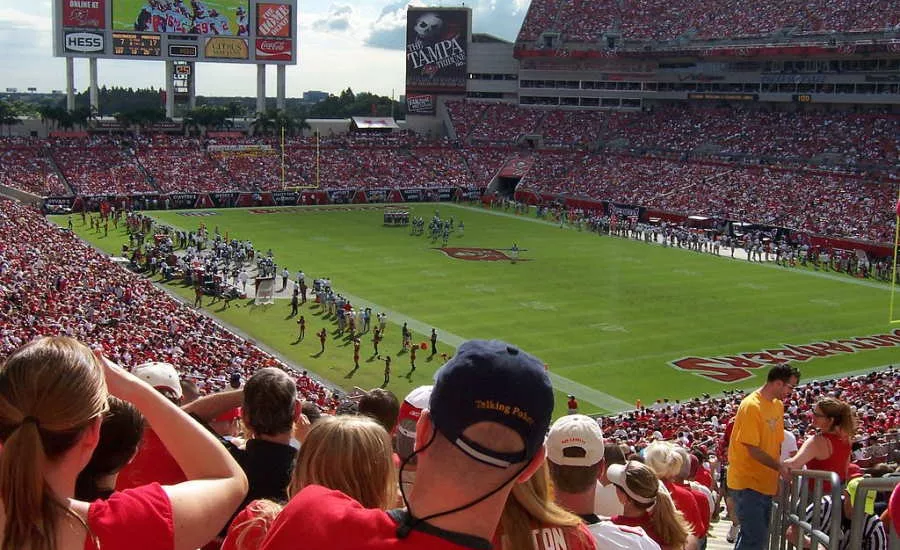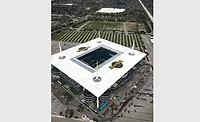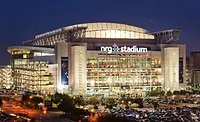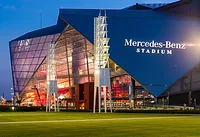5 Things About the Raymond James Stadium Before Super Bowl LV

Photo taken at Raymond James Stadium of the game between the Tampa Bay Buccaneers and Carolina Panthers on Nov. 6, 2005. It is taken from the north east corner of the stadium. Photo taken by user Doctorindy on en.wikipedia. Public domain.
After a football season unlike any other due largely to the COVID-19 crisis, it’s fitting that this year’s championship game will already stand out in Super Bowl lore, regardless of what the players on the field do. Super Bowl LV on Feb. 7 will be the first where a team — in this case, the Tampa Bay Buccaneers — will play in their home stadium.
That required a closer look from RC — as we’ve done with other Super Bowl venues — even if Raymond James Stadium doesn’t technically have a roof.
1. Hot Property
Raymond James Stadium opened in 1998 after two years of construction estimated to cost more than $168 million. Designed by globally-renowned HOK Sport Facility Group, it’s an open-air stadium that hosts more than 65,000 fans largely in red seats — despite Florida’s scorching heat — that does have roofed sections over concourses and the team’s corporate offices.
2. Memorable Venue
In addition to hosting the annual NCAA Outback Bowl and the 2017 National Championship Game, the stadium has hosted two Super Bowls before (2001, 2009). Both of those games were won by teams representing the American Football Conference. That’s the Kansas City Chiefs this year, as the Buccaneers will represent the National Football Conference in the title game.
3. $140 Multi-Million Dollar Redo
Built and financed on public funds two decades earlier, the stadium underwent major renovations starting in 2016 that included upgrades to the audio/visual systems and expansion of clubs, bars and lounges within the stadium concourses.
4. Ahoy, Mates!
Though it lacks a signature roof or distinctive stadium shape, Raymond James Stadium does have a distinctive architectural feature that’s entertained millions of fans over the years. Just off the north end zone sits a 103-foot, 43-ton steel and concrete pirate ship with a cannon that fires when the home team scores a touchdown.
5. To Roof, or Not to Roof?
We mentioned earlier that Tampa’s football stadium is open-air, unlike most other recent Super Bowl locations — for now. Rumors began circulating early last year that city officials could break ground on a new stadium, perhaps with a retractable roof, by 2022. Stay tuned.
Looking for a reprint of this article?
From high-res PDFs to custom plaques, order your copy today!







